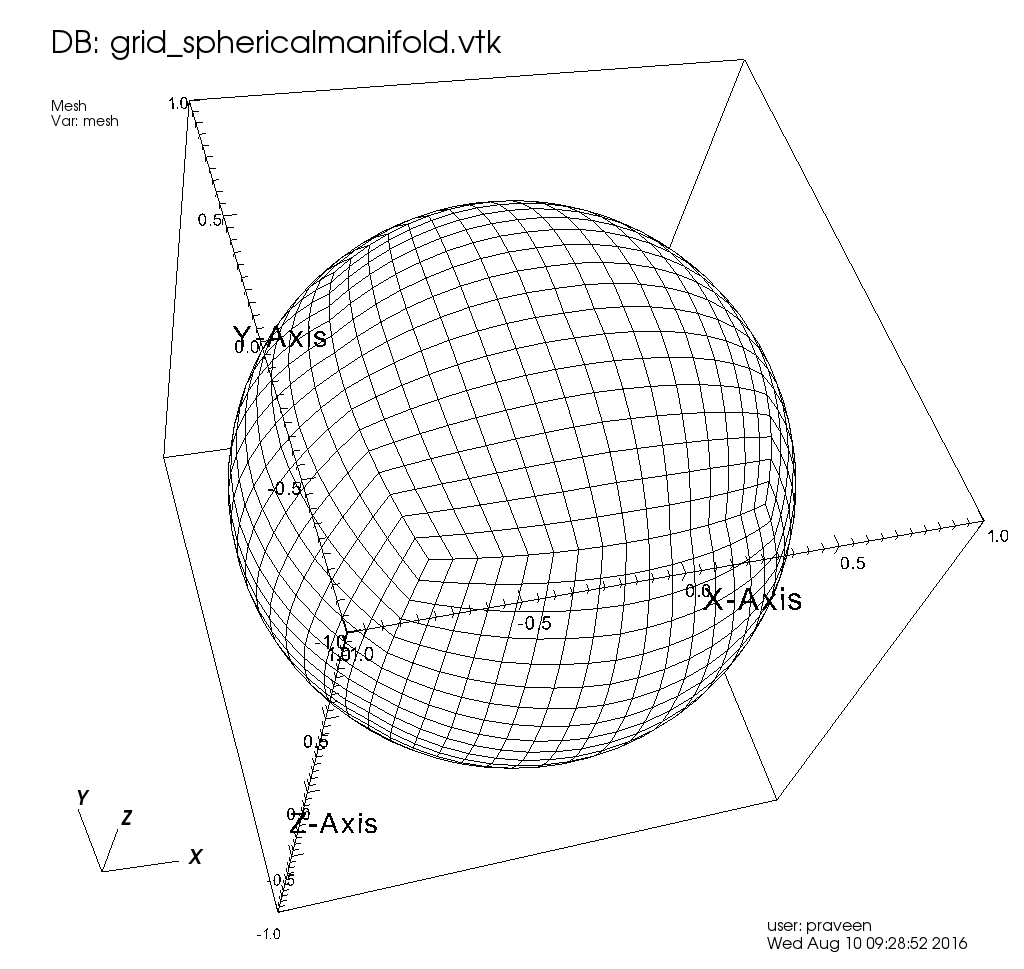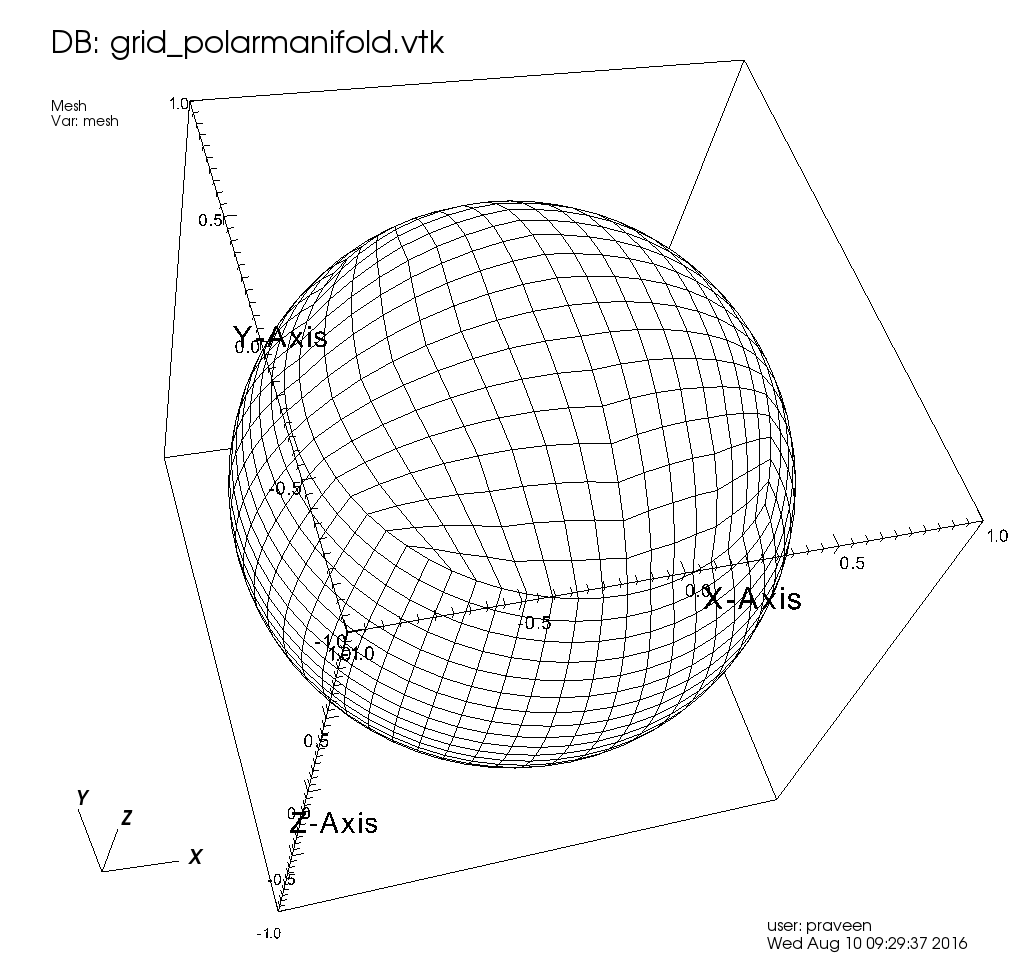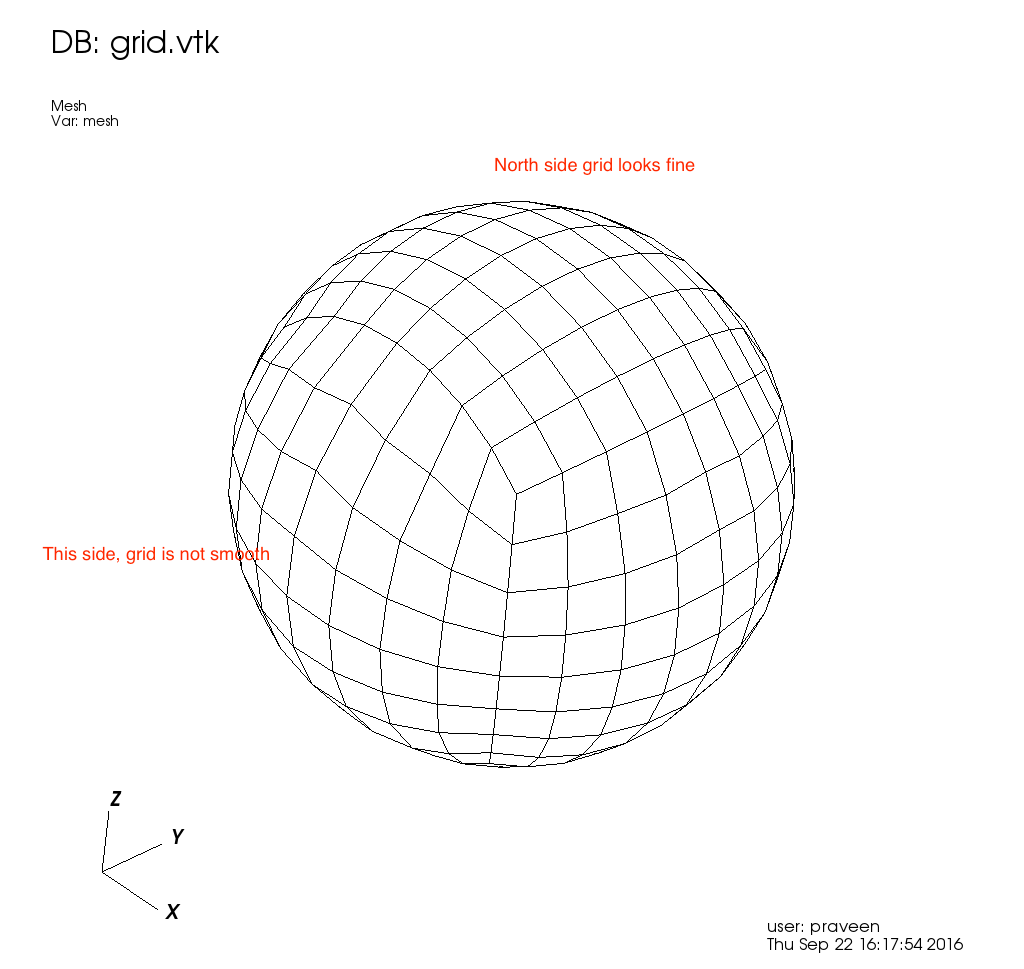Praveen C


Praveen C
Point<spacedim> center(0.0, 0.0, 0.0);
GridGenerator::hyper_sphere(triangulation, center, Radius);
static const PolarManifold<2,3> sphere;
static const FunctionManifold<3,3,3> rotate("x;-z;y","x;z;-y");
static const CompositionManifold<2,3,3,3,2,3> rotated_sphere(sphere, rotate);
triangulation.set_manifold (0, sphere);
triangulation.set_manifold (1, rotated_sphere);
triangulation.set_all_manifold_ids(0);
for (typename Triangulation<dim,spacedim>::active_cell_iterator
cell=triangulation.begin_active();
cell!=triangulation.end(); ++cell)
{
const Point<spacedim> p = cell->center();
if(std::fabs(p[2]) > 0.5 * Radius) // north and south faces
{
cell->set_all_manifold_ids(1); // cell and edges
std::cout << "Setting RotatedPolarManifold\n";
}
else
{
cell->set_manifold_id(0); // set cell only
std::cout << "Setting PolarManifold\n";
}
}
triangulation.refine_global(3);

luca.heltai
On the other hand, the manifold you use to describe the top and bottom part of the sphere are not continuous, so the triangulation gets confused when you add new points. For spheres, the best option is to use SphericalManifold.
I’m implementing your changes for the sphere, and running all tests, in order to fix the bug you encounter in the computation of the area. I think the real problem is somewhere else, but I don’t have any more ideas…
L.
>
>
> --
> The deal.II project is located at http://www.dealii.org/
> For mailing list/forum options, see https://groups.google.com/d/forum/dealii?hl=en
> ---
> You received this message because you are subscribed to the Google Groups "deal.II User Group" group.
> To unsubscribe from this group and stop receiving emails from it, send an email to dealii+un...@googlegroups.com.
> For more options, visit https://groups.google.com/d/optout.
